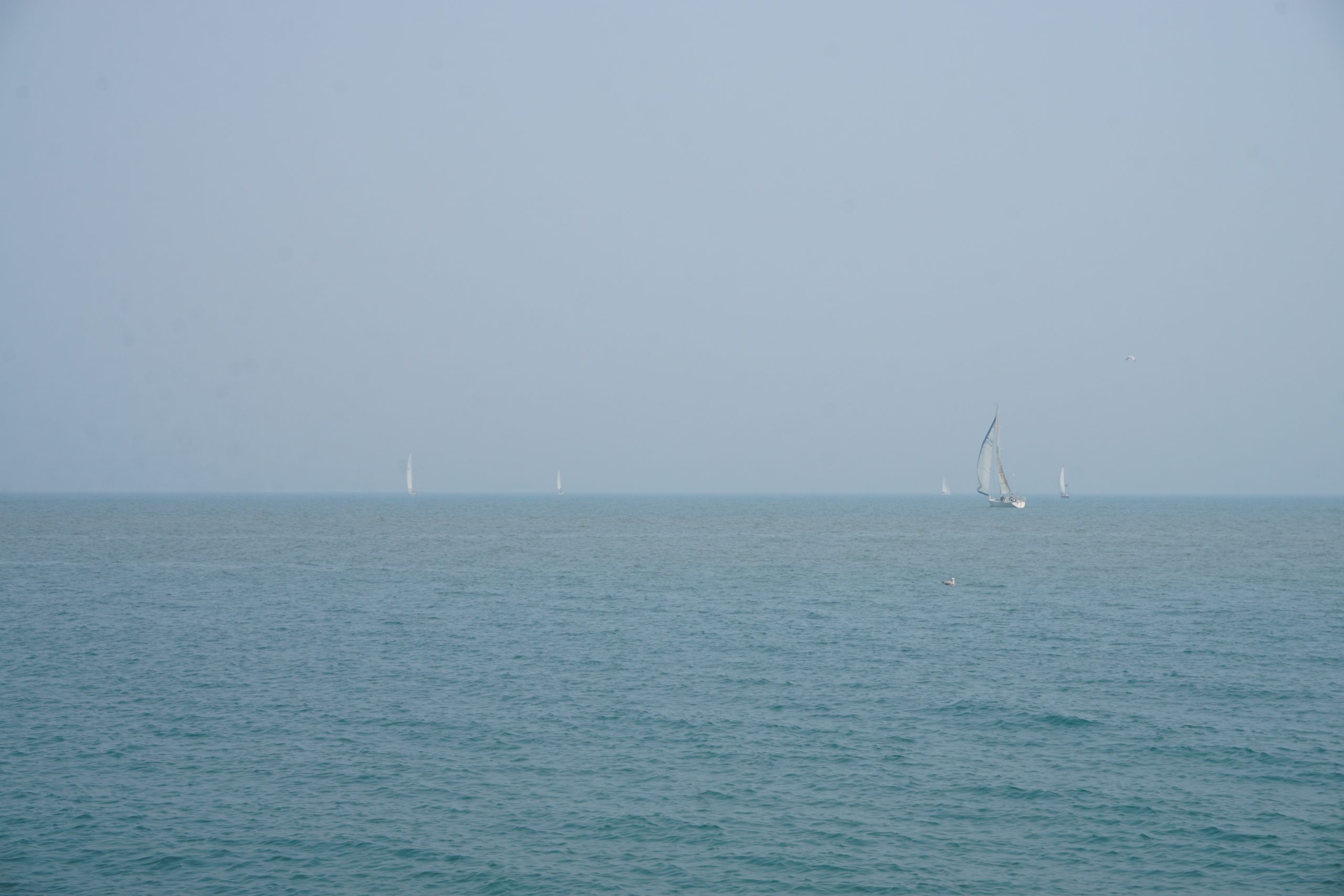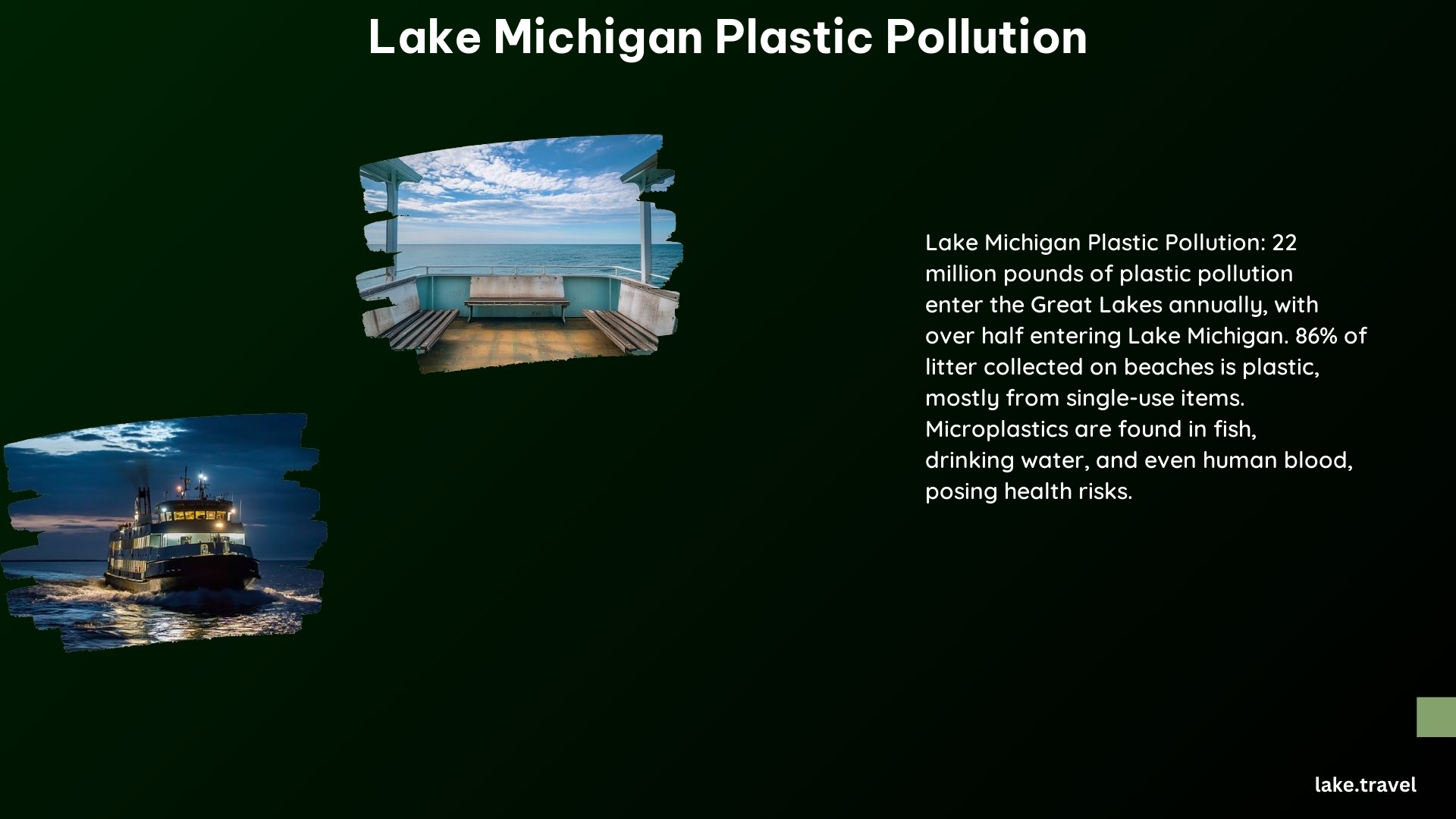Lake Michigan, one of the five Great Lakes, is facing a significant problem of plastic pollution. This article delves into the primary sources of plastic pollution, the impact on the local ecosystem and wildlife, and innovative solutions being implemented to address this pressing environmental concern.
Primary Sources of Plastic Pollution in Lake Michigan

-
Microplastics: Microplastics, defined as plastic particles under 5 millimeters in size, are a major contributor to plastic pollution in Lake Michigan. These tiny particles can come from the degradation of larger plastics, clothing fibers, or debris from larger pieces of plastic.
-
Single-Use Plastics: The breakdown of single-use plastics, such as plastic bags, bottles, and straws, is a significant source of microplastic pollution in Lake Michigan.
-
Nurdles: Nurdles, small plastic pellets used to produce larger plastic products, can also contribute to microplastic pollution in Lake Michigan.
-
City Water Runoff: City water runoff, heavy winds, and rain storms can carry microplastics into the lake, further exacerbating the problem.
Impact on Local Ecosystem and Wildlife

-
Microplastics in Fish: A study found that 85% of fish sampled from three Lake Michigan tributaries had microplastics in their digestive tracts, indicating the widespread presence of these pollutants.
-
Contamination of Food Web: Microplastic pollution can be found in every part of the food web, including mussels, algae, invertebrates, and birds, posing a significant threat to the overall health of the ecosystem.
-
Health Risks: Ingested microplastics can cause developmental delays, reduced mental processing, infertility, and weakened immune systems in animals, ultimately impacting the entire food chain.
Innovative Solutions to Address Plastic Pollution in Lake Michigan
-
Legislation: Efforts to phase out microbeads in personal care products and reduce single-use plastics have been successful in some states, such as Illinois, demonstrating the potential for policy-driven solutions.
-
Adopt-a-Beach Program: The Alliance for the Great Lakes’ Adopt-a-Beach program engages volunteers in shoreline cleanups, collecting data on plastic pollution and promoting solutions to address the issue.
-
Filters on Storm Drains: Cities like Chicago have installed filters on storm drains and sewage systems to catch macro and microplastics before they enter the water systems, preventing further pollution.
-
Reducing Plastic Production: Experts urge reducing plastic production to curb the flow of microplastics into the Great Lakes, as this approach targets the root cause of the problem.
Key Statistics and Data Points
-
22 Million Pounds of Plastic Pollution: Approximately 22 million pounds of plastic pollution enter the Great Lakes every year, with over half of this waste entering Lake Michigan.
-
86% of Litter is Plastic: Data from beach cleanups shows that 86% of litter collected is composed at least partially of plastic.
-
9.7 Million Pieces of Litter: Over 9.7 million pieces of litter, amounting to more than 535,000 pounds, have been removed from Great Lakes beaches through the Adopt-a-Beach program.
The plastic pollution crisis in Lake Michigan is a complex and multifaceted issue that requires a comprehensive approach. By understanding the primary sources, the impact on the local ecosystem, and the innovative solutions being implemented, we can work together to protect this vital natural resource for generations to come.
References
- https://www.michigan.gov/egle/newsroom/mi-environment/2023/04/04/breaking-down-the-problem-of-microplastics-in-the-great-lakes
- https://www.greatlakesnow.org/2024/05/new-study-great-lakes-beaches-are-littered-with-plastic-trash/
- https://greatlakes.org/great-lakes-plastic-pollution-fighting-for-plastic-free-water/
- https://environmentamerica.org/illinois/articles/new-report-highlights-the-plastic-pollution-problem-in-the-great-lakes/
- https://www.ewg.org/news-insights/news/2023/12/microplastics-great-lakes-unsafe-wildlife.
